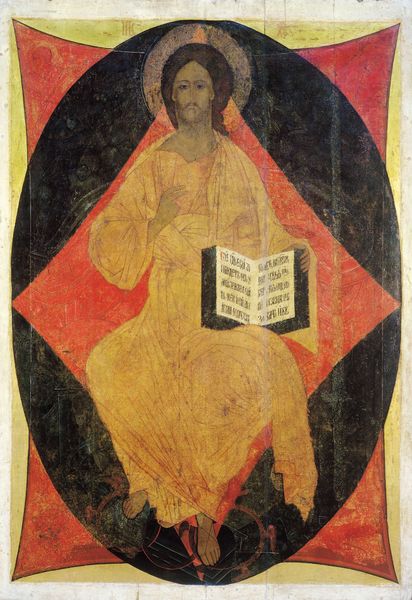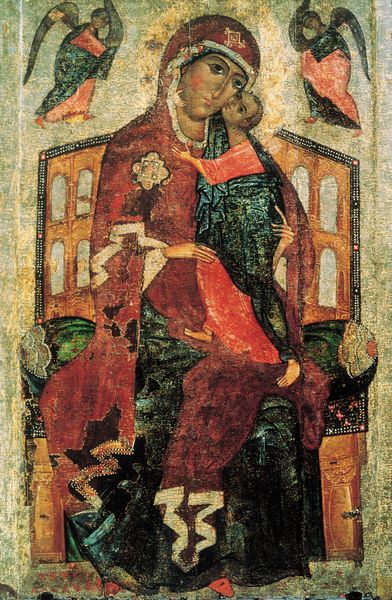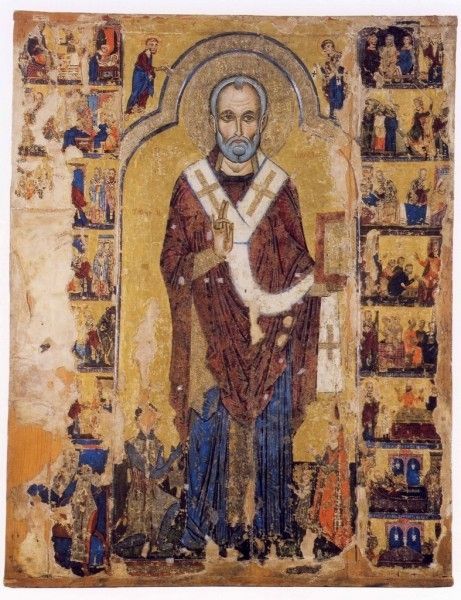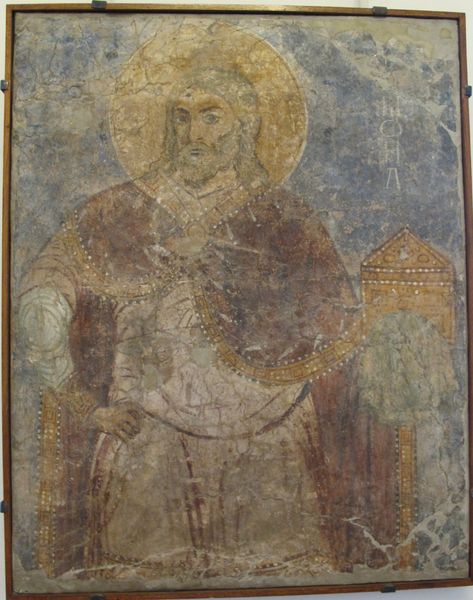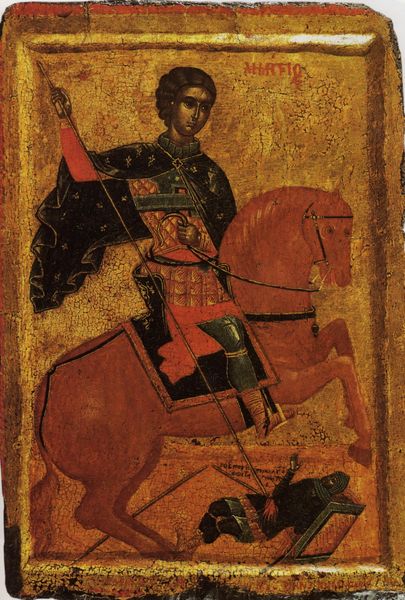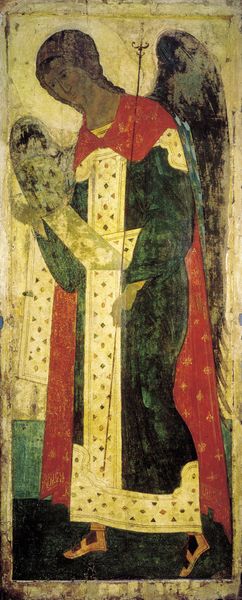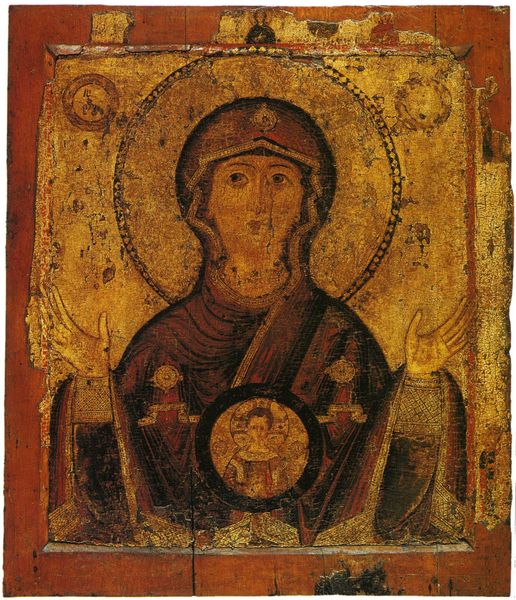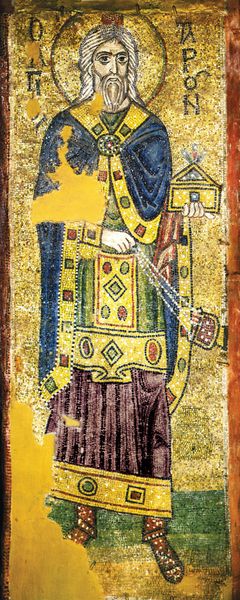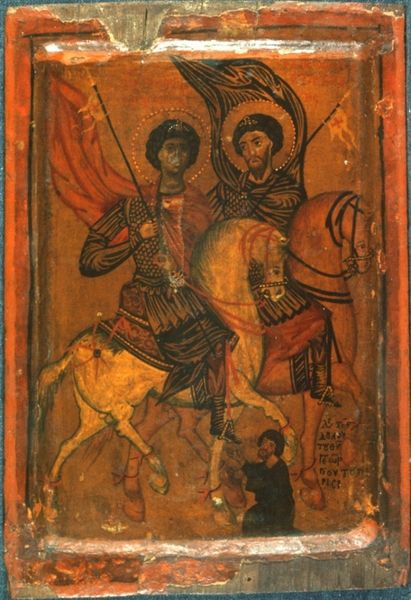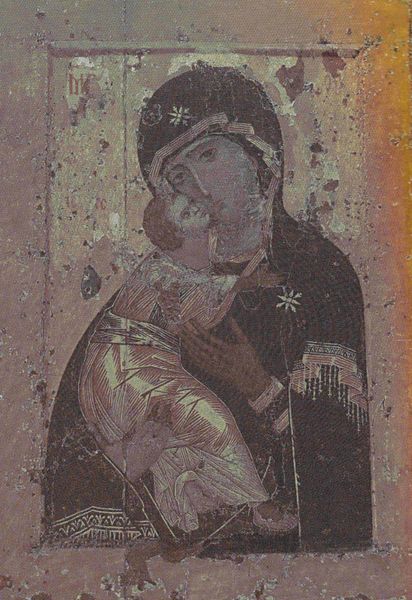
panel, tempera, painting
#
portrait
#
byzantine-art
#
medieval
#
panel
#
tempera
#
painting
#
figuration
#
handmade artwork painting
#
oil painting
#
painting art
#
history-painting
Dimensions: 156 x 108 cm
Copyright: Orthodox Icons,Fair Use
Editor: So, here we have "Demetrius of Thessaloniki," a tempera and panel painting from around 1225. The artist is unknown, part of the Orthodox Icons tradition, and it’s currently in the Tretyakov Gallery in Moscow. The figure, likely Saint Demetrius, is very formal and seems to be sitting on a very decorative throne. It definitely reads as powerful but in a somewhat detached, regal way. How do you interpret this work? Curator: Looking at "Demetrius of Thessaloniki," it’s important to understand its place within the political and religious landscape of the time. Icons served not just as devotional objects but as powerful statements of cultural and religious identity, functioning almost like propaganda. Editor: Propaganda, really? In what sense? Curator: Consider where these icons were displayed – often prominently in churches, acting as visual symbols of authority and spiritual power for the Byzantine Empire. Think about the figures themselves. Demetrius is shown with regal bearing and armed, but also looking beyond his role as protector of Thessaloniki. The controlled color palette further supports that aura of solemn command and heavenly authority. Who was this icon commissioned for, and what message were they trying to project? Editor: I see what you mean. It's less about personal expression and more about projecting power through religious imagery. It’s fascinating to consider that political angle and who it would have impressed, both in its artistry and its subject. It makes me think about who got to decide on its style. Curator: Precisely. The artist's role was one of faithful transmission rather than radical innovation. We often project contemporary notions of artistic freedom onto historical works, forgetting the constraints and imperatives that shaped their creation and reception. Editor: Right. Now, looking again, the historical context really enriches the icon's meaning and its potential impact on the community it was made for. Thanks for helping me to think about it beyond just aesthetics.
Comments
No comments
Be the first to comment and join the conversation on the ultimate creative platform.
